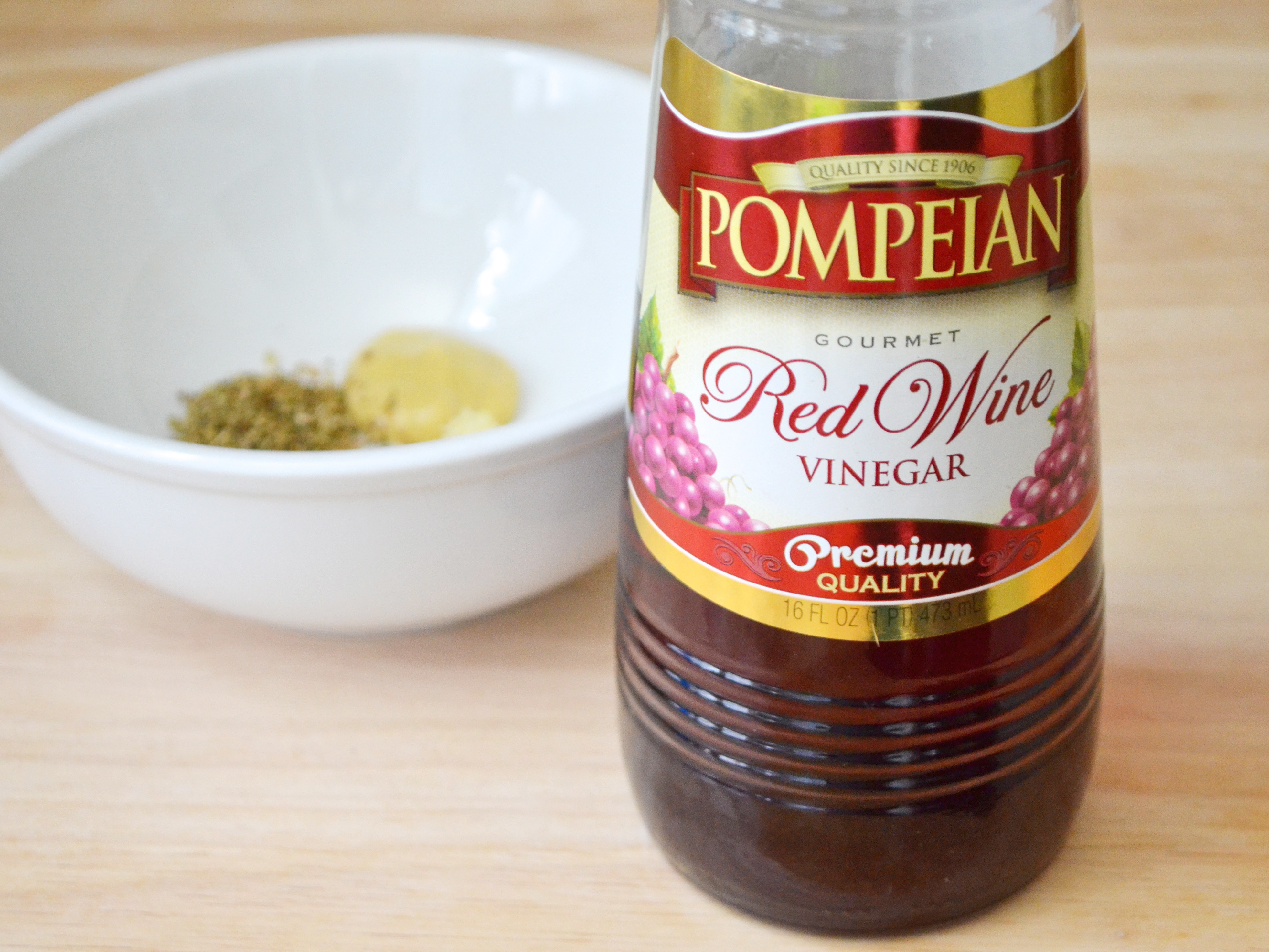
How to Make a Vinaigrette
Perfect for dressing, dipping and marinating. Plus, it's made from scratch!
A basic vinaigrette (say it with me, vi-ni-gret, not vinegar-et) is one of the most versatile tools in a cook’s kitchen. Sure, they're a simple, flavorful way to dress salads, but they're also good for marinating meat and vegetables before grilling or roasting. Plus, once you have the basic vinaigrette formula down, there are hundreds of flavor possibilities at your fingertips, none of which require a real recipe. So, let's dive in and see how to build a basic vinaigrette. For the video guide, click here.
1 Consider your options

There are really only four things you need to make a vinaigrette: oil, vinegar, an emulsifier and flavorings. The body of a vinaigrette is a simple combination of oil and vinegar in a 3-to-1 ratio. This magic ratio gives the dressing body and a smooth texture without making it too sour or acidic. To keep the oil and vinegar suspended in a beautifully even mixture, you also need an emulsifier. Emulsifiers mix easily with both oil and water and act as the glue that keeps your vinaigrette from separating. Common ingredients used as emulsifiers in vinaigrettes include Dijon mustard, honey, egg yolks, tomato paste or even roasted garlic (some are better emulsifiers than others). Lastly, you’ll want your vinaigrette to have a lot of flavor, so it's a good idea to add herbs, salt and pepper.
2 Mix your emulsifier and herbs

To build the vinaigrette, begin by combining the emulsifier with the herbs and spices of your choice. I like my vinaigrette to have extra-bold flavor, so I always include a clove of minced garlic. Minced shallot is great if you want a slightly garlicky flavor without a strong bite. For an extra-mild vinaigrette, stick to a simple mix of herbs, pepper and salt. My basic vinaigrette includes 1/2 tsp dried oregano, some freshly cracked pepper, a clove of minced garlic and a 1/2 Tbsp of Dijon mustard as the emulsifier. I add salt to taste once the vinaigrette is mixed.
3 Add vinegar

Next comes the vinegar. This is where you can really change the personality of the vinaigrette. I love the bold, tangy flavor of red wine vinegar, but you can also use a sweet balsamic vinegar, a mild champagne vinegar, sherry vinegar or even other acidic liquids like citrus juice.
4 Whisk

Whisk two tablespoons of vinegar (or other acidic liquid) into the herbs and emulsifier. Once these ingredients are well mixed, they're ready to make an emulsion with the oil.
5 Add oil

When choosing an oil for your vinaigrette, opt for a neutral oil (often times called "salad oils" because of their mild, unobtrusive flavor), like canola, safflower, sesame, or grape seed oil. For more flavor, you can use a combination of salad oil with a more flavorful oil, like extra-virgin olive oil, walnut oil, or toasted sesame oil. To achieve a 3-to-1 ratio of oil to vinegar, you'll need 6 Tbsp of oil total.
How you mix the oil into the vinaigrette will affect your final product. The traditional method is to vigorously whisk the vinaigrette while slowly adding the oil in a thin stream. This breaks the oil up into small droplets that are then easily suspended in the vinegar, with help of the emulsifier. This process only takes a few minutes, but a lot of elbow grease.
6 Alternative method: shake in a mason jar

Alternatively, you can add all the ingredients to a mason jar at one time, then shake the contents until they're fully mixed. This method is easiest, but it only creates a loose emulsion that tends to separate after a short amount of time. Lastly, you can solicit the help of a blender. Place all the vinaigrette ingredients into a blender and give them a quick whiz until the mixture is smooth and even. The blender option creates the tightest emulsion, but leaves you with a blender to clean afterwards.
7 Enjoy or store for later

Whichever method you choose to make your vinaigrette, the process is quick and the recipe — or "formula" — is simple. The vinaigrette can be used immediately, but I find that the flavor gets better when given a little time to mingle. A fresh vinaigrette can be stored in the refrigerator for up to four or five days, so always make vinaigrettes in small, useable batches.
Want to see the whisking in action? Check out the video for more tips and tricks.

